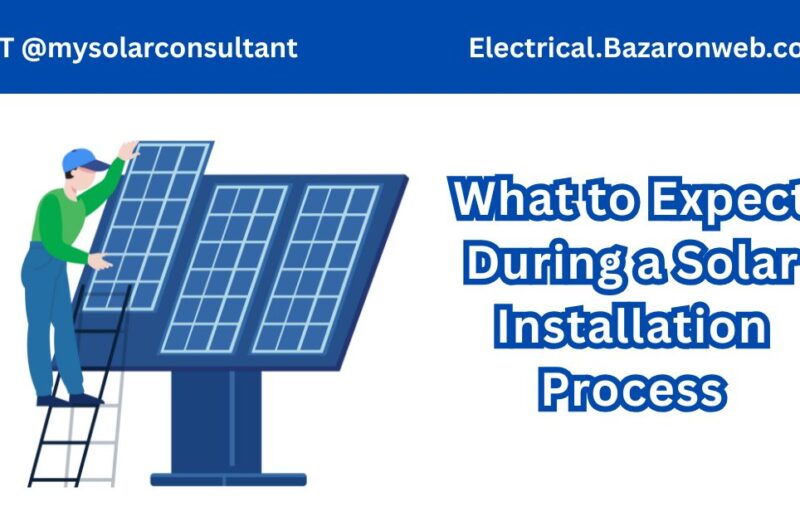Installing solar panels is an exciting step toward energy independence and long-term savings—but many homeowners wonder, “What actually happens during the installation process?”
As someone who has overseen hundreds of residential and commercial installations, I’ve broken it down into clear stages so you know exactly what to expect—from the first site visit to the final flip of the switch.
📝 1. Initial Consultation & Site Assessment
What Happens:
- A solar consultant visits your home or assesses your roof via satellite imagery.
- They evaluate your energy usage, roof condition, sun exposure, and local utility policies.
- You’ll receive a custom solar design and savings estimate.
📊 This is the planning stage—no commitment yet, just analysis and options.
🏗️ 2. Design & Engineering
What Happens:
- Engineers finalize a solar layout, considering your roof size, orientation, shading, and electrical setup.
- A detailed proposal is prepared, and once you approve, they begin preparing for permits.
🔧 Expect a design that meets local codes, utility requirements, and maximizes efficiency.
📄 3. Permits & Paperwork
What Happens:
- The installer handles city permits, HOA approvals, and utility interconnection applications.
- This step may take 1–4 weeks depending on your location.
📌 You don’t need to do anything here—the installer handles the bureaucracy.
🔨 4. Solar Panel Installation
What Happens:
- A licensed crew arrives and completes the installation in 1–3 days, depending on system size.
- They mount panels, connect wiring, and install the inverter and safety equipment.
🛠️ Most installations are minimally disruptive. The crew will need roof and electrical panel access.
✅ 5. Inspection & Utility Approval
What Happens:
- The local building inspector and your utility company conduct final inspections.
- Once approved, your utility issues Permission to Operate (PTO).
🕒 This can take anywhere from a few days to 2–3 weeks depending on the region.
⚡ 6. System Activation
What Happens:
- Your installer flips the switch—and your solar system goes live.
- You’ll be trained on using the monitoring app to track performance.
☀️ Now your home is generating clean, free electricity from the sun!
📦 Optional: Battery Backup Installation
If you’ve opted for battery storage (like Tesla Powerwall or Enphase Encharge):
- Battery setup is integrated during or after panel installation.
- Provides backup power during outages and peak-hour savings.
Final Thoughts
The solar installation process is well-structured and hands-off for homeowners. A good EPC provider will handle the technical and regulatory aspects while keeping you informed.
With proper planning, your solar journey will be smooth, efficient, and highly rewarding—both financially and environmentally.
Written by Sudeep
Electrical Engineer | Solar EPC Consultant | 25+ Years of Experience in Residential & Commercial Solar Projects

